March 10, 2022:
The morning of March 10, 2022, we left Jerusalem and entered the West Bank to visit Bethlehem, and the Church of the Nativity. It was somewhat interesting to enter the territory controlled by the Palestinian Authority. Since the Oslo Peace Accords agreed to between Israel and the Palestinian Authority, the West Bank is divided into three classifications of territory: Area A -which is controlled by the Palestinian Authority; Area B- which is under Palestinian Authority’s administration, but Israeli security; and Area C-which is subject to both Israeli security and Israeli administration.


From the road, you could see not only the tall walls separating the Palestinian Authority territory, but also what are described as “informal” Jewish settlements in the parts of the West Bank not controlled by the Palestinian Authority. Jim and I have seen informal settlements in other parts of the world, but some of these look like miniature cities. In addition to seeing the walls everywhere, there was some interesting graffiti on the walls just inside the checkpoint, and the British artist, Banksy, owns a hotel right at the wall. Instead of being the Waldorf; it’s the Walled-Off Hotel, because none of the rooms have a view of anything but the wall.







We pulled into Bethlehem, parked and and walked to the church. From the parking structure, we had views out over the Judean desert. Many Jews consider Judea and Samaria (West Bank) to be Israeli territory, which is just one more point of controversy in this complicated land. Our local guide, Ramzi, who is an Arab of Greek Orthodox persuasion, was a fountain of information! As we entered the Church of the Nativity through the “Humiliation Gate”, he warned us that this visit to the inner sanctum of the church was not going to be a serene religion experience because different religions have to balance their time there. Our visit had to be timed to fit between two different Orthodox and one Catholic mass. This religious site is also covered by the “Status Quo” agreement, so the different religions who have dominion in the Church are jockeying to maintain their “rights” under the agreement.






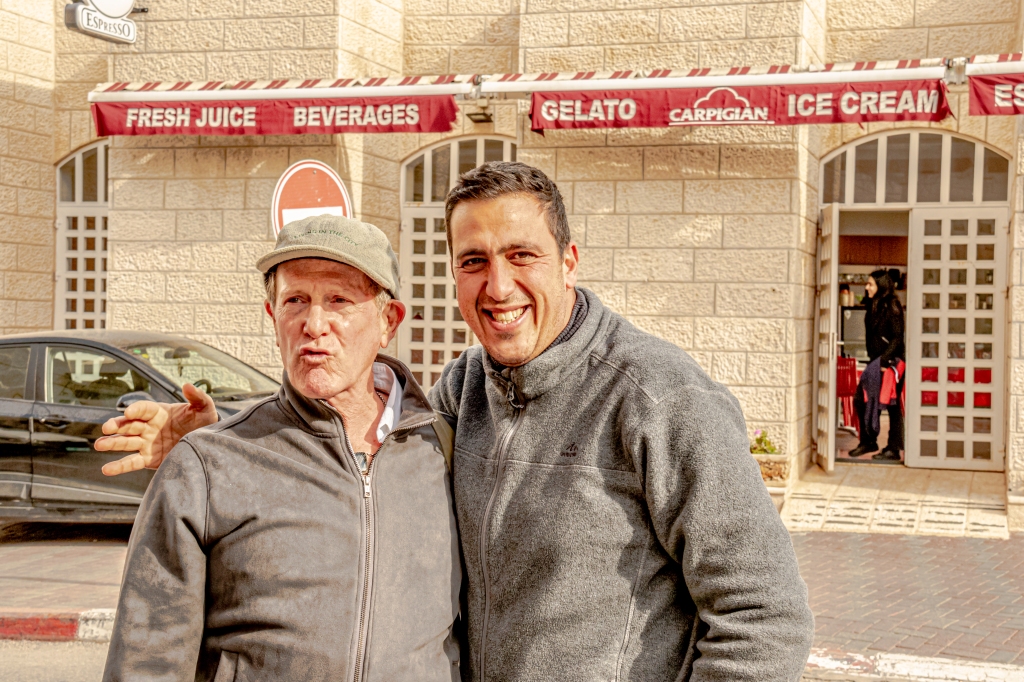
The Church was built originally by Constantine in 325 A.D. after his mother , Helena, identified it as another of the key biblical sites. The original floor was mosaic, which you can still see through slats in the floor covering it. The Church fell into disrepair, but was restored by Justinian in 6th century A.D. The frescoes on columns are also from the Justinian period. After the first Arab invasion, the Church was recaptured by the Crusaders, who replaced the roof with cedars of Lebanon. The mosaics on the upper walls of the main nave are also from the Crusader period. But the original script of the mosaics was written in Latin. In later centuries, the Greek Orthodox, who mostly control the Church replaced the text with Greek.



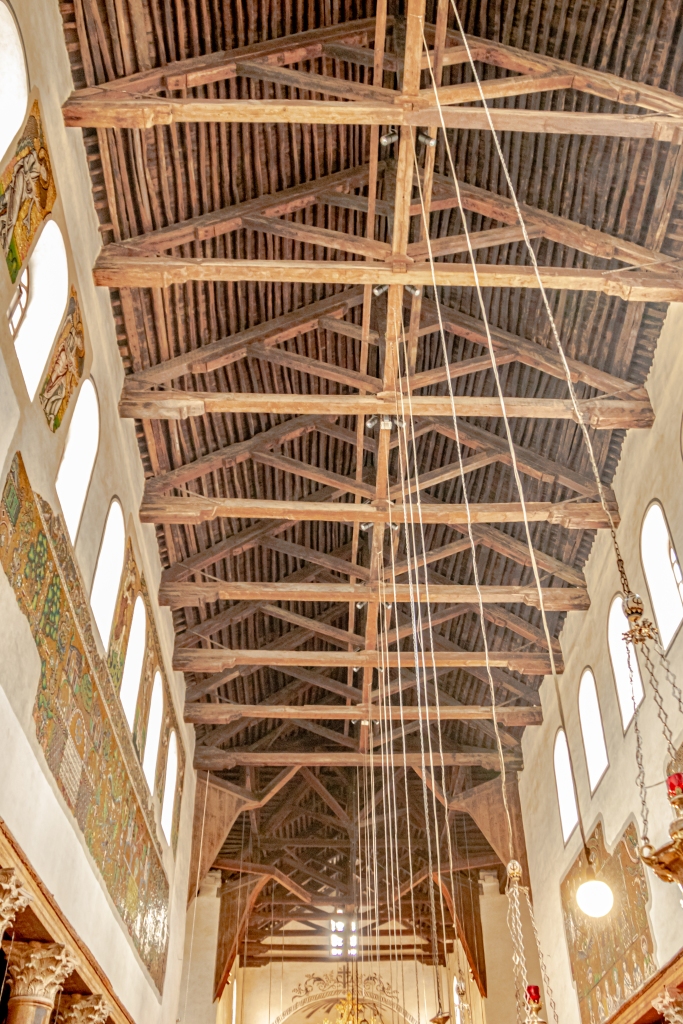



A restoration of the Church was recently completed, all except the Greek Orthodox altar which is still being restored. We saw the Italian baroque restoration experts at work. The main alter of a Greek Orthodox church is called the iconostasis. Behind the main altar is an area never seen by the parishioners called the “holy of holies”. Sound familiar?! Most of the Christians in Bethlehem are Greek Orthodox, and this church conducts its regular Sunday mass in both Arabic and Greek. In fact, 20% of the population of Bethlehem is Christian Arab.
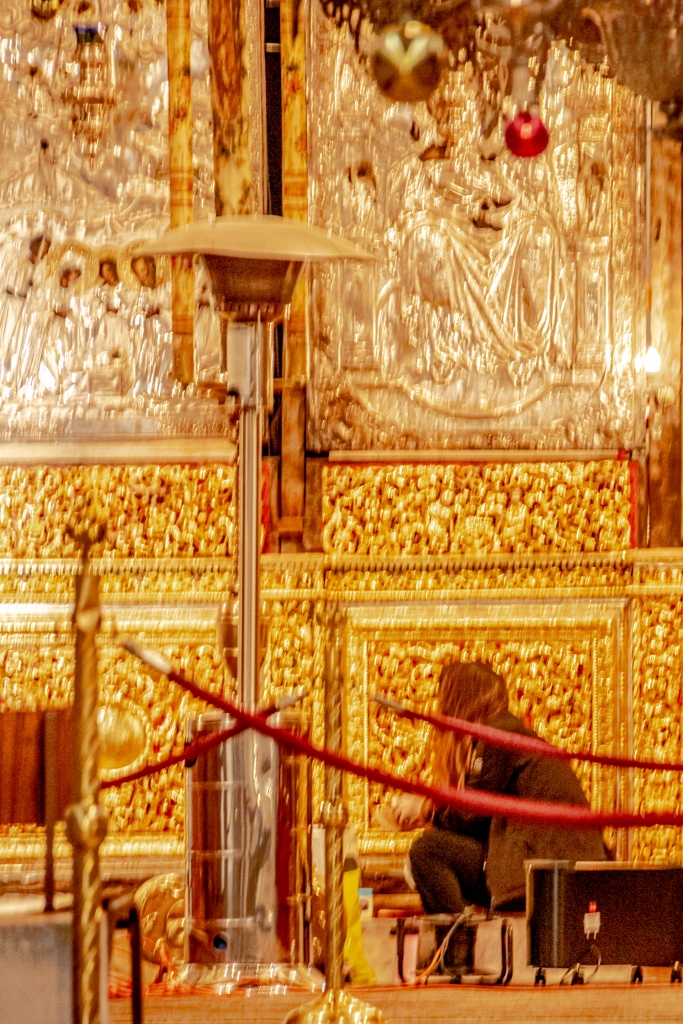
We had to wait about thirty minutes for one of the masses to end, before we could enter the chapel where Jesus was born, which is located in a grotto beneath the main floor of the church. While we were waiting, we also viewed the Armenian church, whose altar was less ornate than the Greek Orthodox one right next to it. There was also a Small Syrian Orthodox altar (who are from same branch as Coptic Christians) tucked in the area we viewed. Because they have limited rights in this church, there are only a few days a year when they can conduct services. For example, they celebrate Jesus’ birth on January 19 because it is a day of epiphany when Jesus was baptized 13 days after the Orthodox celebration of Jesus’ birth on Jan 6th. From this area, you can look below into the Grotto, where we had some views of the mass being conducted there. We watched the priest and parishioners exit, but still had to wait. Before we could enter, there was this ritual cleansing practice (as if a religious service by another faith somehow soiled the chapel) between one faith’s services and the next.
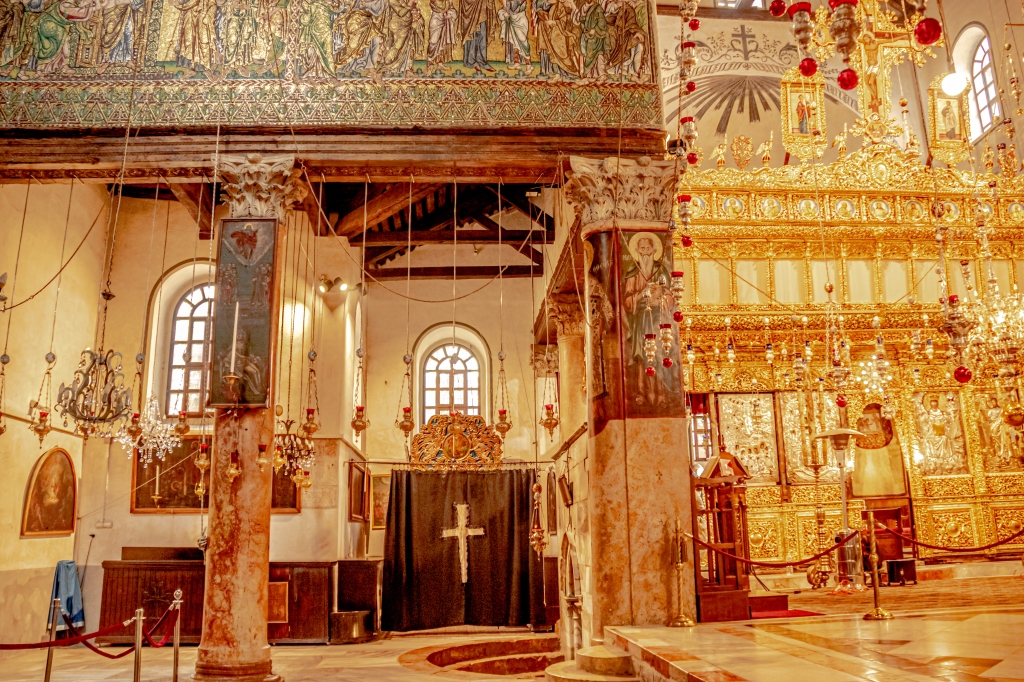

The upper church is located directly over the star below where Jesus was born. The chandeliers were donated by Czar Nicolas II. The Grotto is the altar below with the star on ground is where Jesus was born. Similar to the Altar at Calvary in the Church of the Holy Sepulcher, the altar table sits above the star on the ground marking where Jesus was born. People jockey for position to get into this tiny area, snap their pictures, and get out before the next church service commences. Ramzi was right; not serene at all.

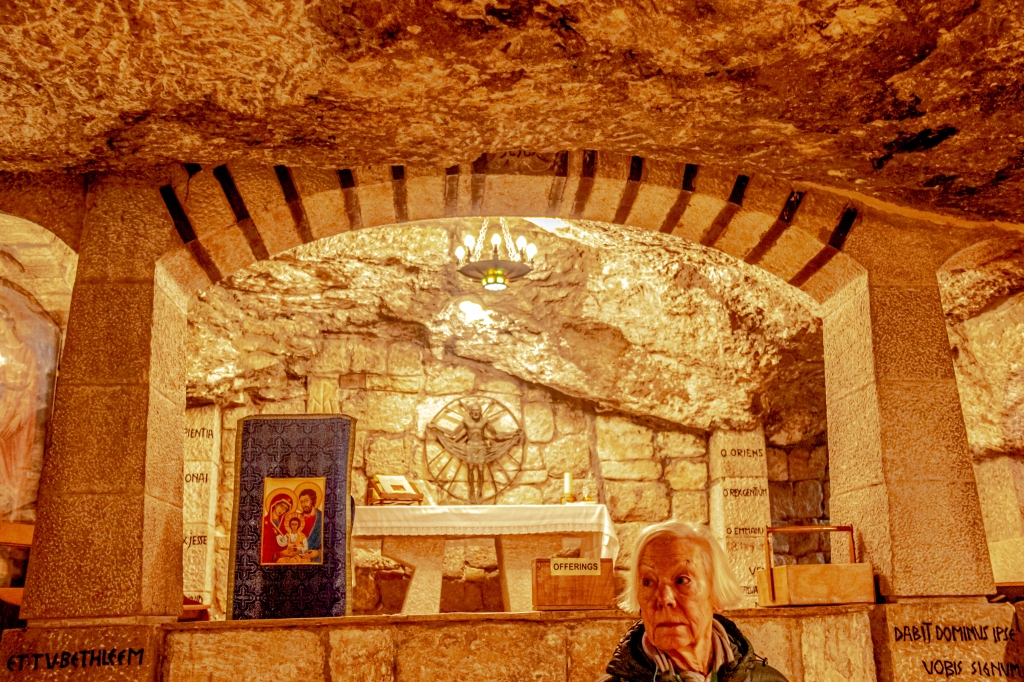




There is another site is Bethlehem which is of some interest to Christians. ACT (“according to Christian tradition”), when Mary and Joseph were fleeing Israel after Jesus’ birth, they stopped back in Bethlehem on their way to Egypt so Mary could nurse Jesus’ Some of her mother’s milk was spilled in a cave, and caused the cave walls to turn white. Infertile women still travel here to scrape some of this white chalky substance from the walls, mix it with liquid, and drink it, to overcome their infertility. Sure enough, this cave has also been converted into an altar and is called the Milk Grotto. Don’t ask me; I just report this stuff!
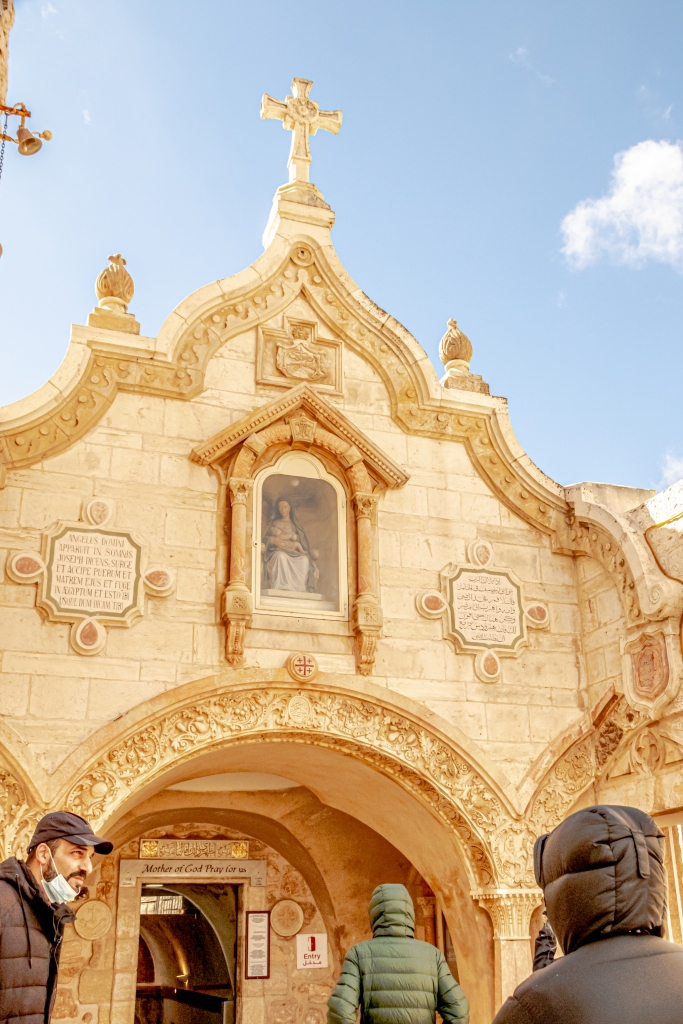




After a little free time in Bethlehem, we returned to Jerusalem in order to visit the Israeli Museum. If you visit Jerusalem, this museum is well worth a visit. For one, the grounds are gorgeous, with sculptures and lovely plantings.




But the two real treasures here are an incredible scale model of the city of Jerusalem as it existed during the Second Temple period, which coincided with both Jesus’ existence and Herod’s rule, right before its destruction by the Romans. Completely beyond that, most historians would say you could justify a visit just because this is the home of the Dead Sea Scrolls.
The model was created in the 1960s before the Six Days’ War , while Jerusalem was still in the hands of Jordan. That meant that it was created before Israel’s mass excavations of Jerusalem took place, so some of the details are a little off. The designer of the model, Michael Avi-Yonah, an Israeli archeologist and historian, based upon his model on the writings of Josephus Flavius from 1st century AD, and also the book of the Mischna ,which was a codified compilation of the oral history of the rabbis.



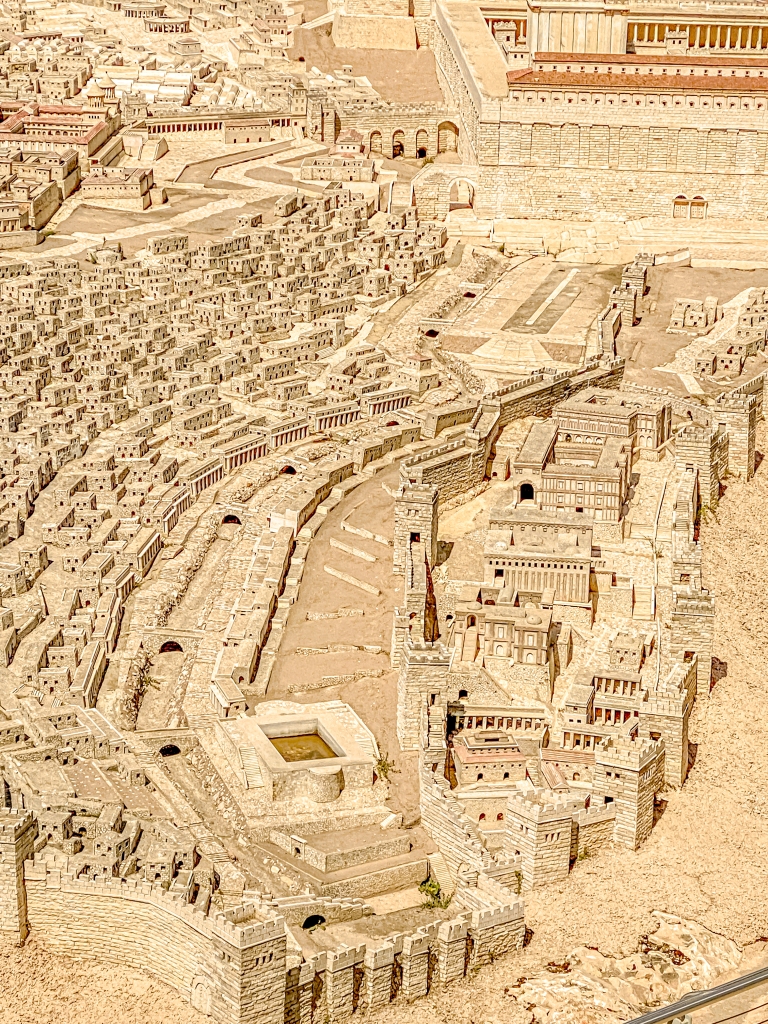



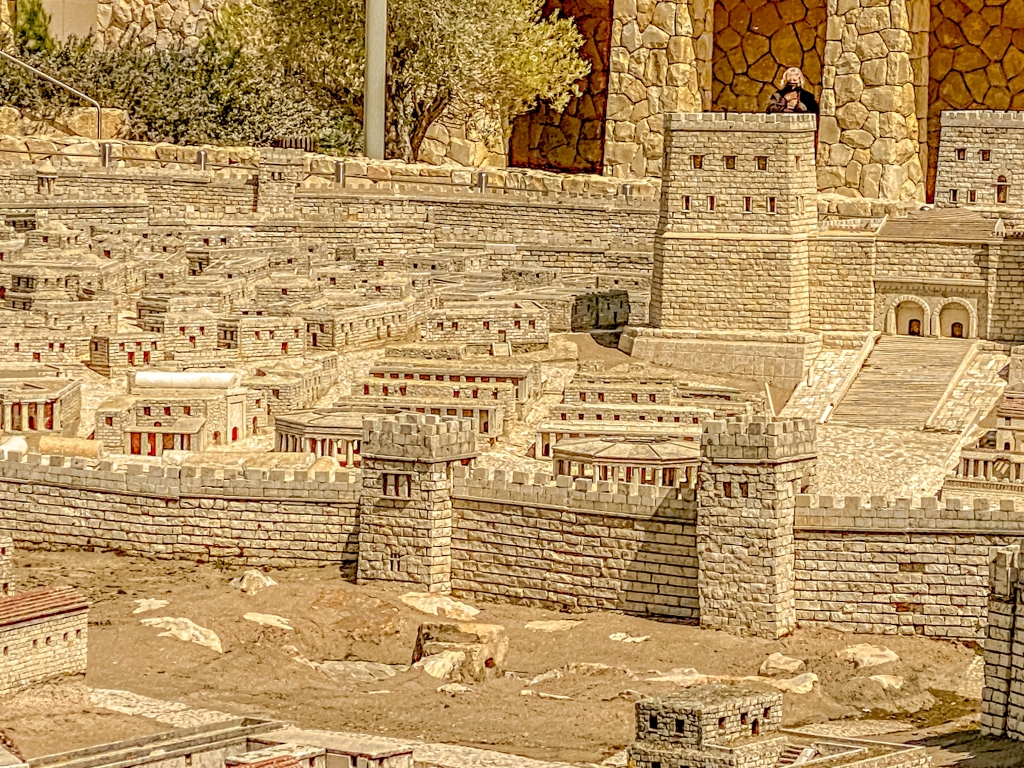

After viewing the model, we went to see the Dead Sea Scrolls. The scrolls were found in caves near Qumran in 1947. The Shrine of the Book is a whole research and display annex within the Israel Museum, which houses the Dead Sea Scrolls; but not all of them are on display. Their discovery is considered the greatest archeological discovery in Jewish history. The earliest of the scrolls date from 250 B.C.; the latest from 67 AD. The oldest scrolls are a set of phylacteries. All of the scrolls were written in Hebrew or Aramaic. Before this discovery, the earliest Hebrew Bible was only 1000 years old, but the stories from the Dead Sea Scrolls and that oldest Hebrew Bible matched almost exactly. In fact, as part of this discovery, every single book of the Hebrew Bible was found except two. Other scrolls are books that didn’t make it into the Hebrew Bible. The third set of books is about the people who kept the books; They were known as the Essene or Dead Sea sect, which was a very Messianic Jewish sect who lived an ascetic lifestyle. The scrolls were discovered in urns in caves, but it is unclear whether the Essene lived in those caves or in the community nearby. Among the scrolls were some literature, for example, the story of the Sons of Light vs. the Sons of Dark. All of the scrolls were written on parchment made from animal skins.


The Shrine of the Book was an amazing scholastic enterprise, and it is visited by scholars from all over the world. However, this was our last afternoon in Jerusalem, and we had earned some free time. Tomorrow we will leave Israel for Jordan, so stay tuned for more explorations.

